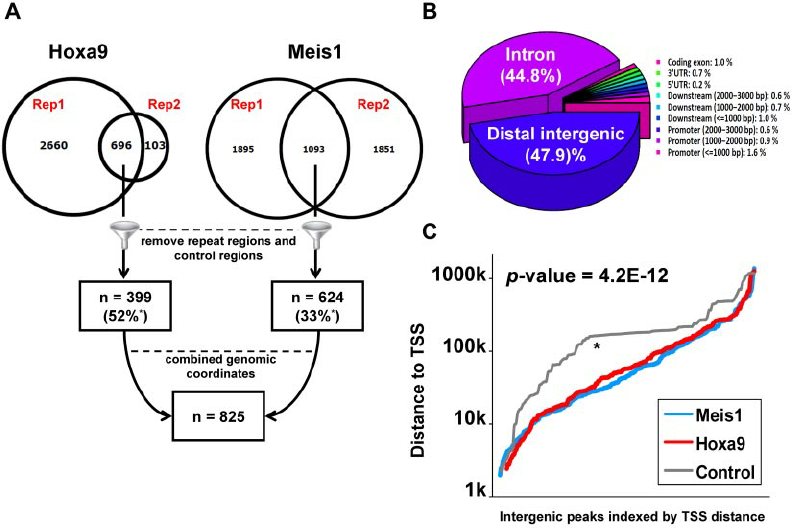Filters
Host (770489)
Bovine (1090)Canine (20)Cat (408)Chicken (1642)Cod (2)Cow (333)Crab (15)Dog (524)Dolphin (2)Duck (13)E Coli (239125)Equine (7)Feline (1864)Ferret (306)Fish (125)Frog (55)Goat (36847)Guinea Pig (752)Hamster (1376)Horse (903)Insect (2053)Mammalian (512)Mice (6)Monkey (622)Mouse (96367)Pig (197)Porcine (70)Rabbit (360490)Rat (11713)Ray (55)Salamander (4)Salmon (15)Shark (3)Sheep (4247)Snake (4)Swine (301)Turkey (57)Whale (3)Yeast (5339)Zebrafish (3022)Isotype (157212)
IgA (13691)IgA1 (946)IgA2 (319)IgD (1964)IgE (5651)IgG (87493)IgG1 (16666)IgG2 (1330)IgG3 (2729)IgG4 (1695)IgM (22194)IgY (2534)Label (239657)
AF488 (2465)AF594 (662)AF647 (2324)ALEXA (11546)ALEXA FLUOR 350 (255)ALEXA FLUOR 405 (260)ALEXA FLUOR 488 (672)ALEXA FLUOR 532 (260)ALEXA FLUOR 555 (274)ALEXA FLUOR 568 (253)ALEXA FLUOR 594 (299)ALEXA FLUOR 633 (262)ALEXA FLUOR 647 (607)ALEXA FLUOR 660 (252)ALEXA FLUOR 680 (422)ALEXA FLUOR 700 (2)ALEXA FLUOR 750 (414)ALEXA FLUOR 790 (215)Alkaline Phosphatase (825)Allophycocyanin (32)ALP (387)AMCA (80)AP (1160)APC (15226)APC C750 (13)Apc Cy7 (1248)ATTO 390 (3)ATTO 488 (6)ATTO 550 (1)ATTO 594 (5)ATTO 647N (4)AVI (52)Beads (235)Beta Gal (2)BgG (1)BIMA (6)Biotin (27799)Biotinylated (1810)Blue (708)BSA (878)BTG (46)C Terminal (688)CF Blue (19)Colloidal (22)Conjugated (29282)Cy (163)Cy3 (390)Cy5 (2041)Cy5 5 (2469)Cy5 PE (1)Cy7 (3638)Dual (170)DY549 (3)DY649 (3)Dye (1)DyLight (1430)DyLight 405 (7)DyLight 488 (216)DyLight 549 (17)DyLight 594 (84)DyLight 649 (3)DyLight 650 (35)DyLight 680 (17)DyLight 800 (21)Fam (13)Fc Tag (8)FITC (30173)Flag (207)Fluorescent (146)GFP (580)GFP Tag (179)Glucose Oxidase (59)Gold (511)Green (580)GST (721)GST Tag (326)HA Tag (439)His (629)His Tag (504)Horseradish (550)HRP (12993)HSA (249)iFluor (16571)Isoform b (31)KLH (88)Luciferase (102)Magnetic (260)MBP (344)MBP Tag (93)Myc Tag (409)OC 515 (1)Orange (78)OVA (104)Pacific Blue (213)Particle (64)PE (33605)PerCP (8438)Peroxidase (1379)POD (11)Poly Hrp (94)Poly Hrp40 (13)Poly Hrp80 (3)Puro (32)Red (2440)RFP Tag (62)Rhodamine (607)RPE (910)S Tag (194)SCF (184)SPRD (351)Streptavidin (55)SureLight (77)T7 Tag (97)Tag (4800)Texas (1249)Texas Red (1231)Triple (10)TRITC (1401)TRX tag (90)Unconjugated (2106)Unlabeled (218)Yellow (84)Pathogen (489613)
Adenovirus (8687)AIV (317)Bordetella (25038)Borrelia (18284)Candida (17817)Chikungunya (639)Chlamydia (17666)CMV (121399)Coronavirus (5949)Coxsackie (859)Dengue (2872)EBV (1512)Echovirus (215)Enterovirus (677)Hantavirus (259)HAV (910)HBV (2098)HHV (876)HIV (7887)hMPV (302)HSV (2359)HTLV (635)Influenza (22155)Isolate (1208)KSHV (396)Lentivirus (3545)Lineage (3025)Lysate (127759)Marek (94)Measles (1169)Parainfluenza (1692)Poliovirus (3033)Poxvirus (81)Rabies (1530)Reovirus (536)Retrovirus (1069)Rhinovirus (511)Rotavirus (5358)RSV (1786)Rubella (1072)SIV (279)Strain (67791)Vaccinia (7231)VZV (667)WNV (369)Species (2989665)
Alligator (10)Bovine (159807)Canine (120802)Cat (13121)Chicken (113988)Cod (1)Cow (2031)Dog (12758)Dolphin (21)Duck (9606)Equine (2012)Feline (1019)Ferret (259)Fish (12875)Frog (1)Goat (90541)Guinea Pig (87959)Hamster (36959)Horse (41295)Human (958131)Insect (653)Lemur (119)Lizard (24)Monkey (110990)Mouse (471934)Pig (26233)Porcine (131969)Rabbit (127882)Rat (349252)Ray (443)Salmon (348)Seal (8)Shark (29)Sheep (105151)Snake (12)Swine (519)Toad (4)Turkey (244)Turtle (75)Whale (45)Zebrafish (535)Technique (5595867)
Activation (170412)Activity (10776)Affinity (44632)Agarose (2604)Aggregation (199)Antigen (135466)Apoptosis (27400)Array (2021)Blocking (71764)Blood (8529)Blot (10966)ChiP (814)Chromatin (6286)Colorimetric (9866)Control (80077)Culture (3219)Cytometry (5475)Depletion (56)DNA (172524)Dot (233)EIA (1039)Electron (6275)Electrophoresis (254)Elispot (1294)Enzymes (52762)Exosome (4280)Extract (1089)Fab (2229)FACS (43)FC (80588)Flow (6662)Fluorometric (1407)Formalin (97)Frozen (2669)Functional (707)Gel (2480)HTS (136)IF (12906)IHC (16566)Immunoassay (1589)Immunofluorescence (4119)Immunohistochemistry (72)Immunoprecipitation (68)intracellular (5602)IP (2854)iPSC (259)Isotype (8804)Lateral (1587)Lenti (319416)Light (37309)Microarray (47)MicroRNA (4835)Microscopy (52)miRNA (88042)Monoclonal (524774)Multi (3844)Multiplex (302)Negative (4255)PAGE (2521)Panel (1633)Paraffin (2587)PBS (20266)PCR (9)Peptide (276250)PerCP (13759)Polyclonal (2752395)Positive (6334)Precipitation (61)Premix (130)Primers (3464)Probe (2630)Profile (229)Pure (7818)Purification (15)Purified (78237)Real Time (3042)Resin (2975)Reverse (2438)RIA (460)RNAi (17)Rox (1023)RT PCR (6608)Sample (2666)SDS (1524)Section (2895)Separation (86)Sequencing (122)Shift (22)siRNA (319447)Standard (42464)Sterile (10168)Strip (1863)Taq (2)Tip (1172)Tissue (42843)Tube (3305)Vitro (3577)Vivo (980)WB (2515)Western Blot (10683)Tissue (2016611)
Adenocarcinoma (1075)Adipose (3463)Adrenal (657)Adult (4883)Amniotic (65)Animal (2453)Aorta (436)Appendix (89)Array (2021)Ascites (4737)Bile Duct (20)Bladder (1675)Blood (8529)Bone (27361)Brain (31212)Breast (10918)Calvaria (28)Carcinoma (13497)cDNA (58548)Cell (413580)Cellular (9348)Cerebellum (700)Cervix (232)Child (1)Choroid (19)Colon (3911)Connective (3602)Contaminant (3)Control (80077)Cord (661)Corpus (148)Cortex (698)Dendritic (1849)Diseased (265)Donor (1359)Duct (861)Duodenum (643)Embryo (425)Embryonic (4586)Endometrium (466)Endothelium (1424)Epidermis (166)Epithelium (4224)Esophagus (716)Exosome (4280)Eye (2033)Female (475)Frozen (2669)Gallbladder (155)Genital (5)Gland (3435)Granulocyte (8984)Heart (6851)Hela (408)Hippocampus (325)Histiocytic (74)Ileum (201)Insect (4880)Intestine (1945)Isolate (1208)Jejunum (175)Kidney (8079)Langerhans (283)Leukemia (21570)Liver (17342)Lobe (835)Lung (6074)Lymph (1208)Lymphatic (639)lymphocyte (22588)Lymphoma (12791)Lysate (127759)Lysosome (2813)Macrophage (31820)Male (1617)Malignant (1467)Mammary (1987)Mantle (1042)Marrow (2210)Mastocytoma (3)Matched (11710)Medulla (156)Melanoma (15525)Membrane (105788)Metastatic (3575)Mitochondrial (160328)Muscle (37425)Myeloma (748)Myocardium (11)Nerve (6399)Neuronal (17035)Node (1206)Normal (9486)Omentum (10)Ovarian (2511)Ovary (1173)Pair (47185)Pancreas (2843)Panel (1633)Penis (64)Peripheral (1910)Pharynx (122)Pituitary (5421)Placenta (4049)Prostate (9438)Proximal (318)Rectum (316)Region (202210)Retina (956)Salivary (3119)Sarcoma (6946)Section (2895)Serum (24915)Set (167649)Skeletal (13634)Skin (1882)Smooth (7574)Spinal (424)Spleen (2292)Stem (8898)Stomach (925)Stroma (49)Subcutaneous (47)Testis (15396)Thalamus (127)Thoracic (60)Throat (40)Thymus (2988)Thyroid (14149)Tongue (144)Total (10150)Trachea (227)Transformed (174)Tubule (48)Tumor (76982)Umbilical (208)Ureter (73)Urinary (2467)Uterine (303)Uterus (414)The Role of HOXA9 in Leukemia
Explore the role of HOXA9 in leukemia and its impact on blood cancer development. Learn how the HOXA9 ELISA Kit quantifies HOXA9 protein levels, aiding in cancer research, dr ug discovery, and biomarker validation.
Genprice
Scientific Publications

The Role of HOXA9 in Leukemia
What is HOXA9 ?
HOXA9 (Homeobox A9) is a member of the HOX gene family, a group of genes that encode transcription factors proteins that regulate other genes (NCBI). These HOX genes play important roles in development, helping cells decide their identity and role in the body. HOXA9 is located on human chromosome 7 (region 7p15) and is normally more active during embryonic development and in early blood‑forming (hematopoietic) cells rather than in fully mature adult cells.
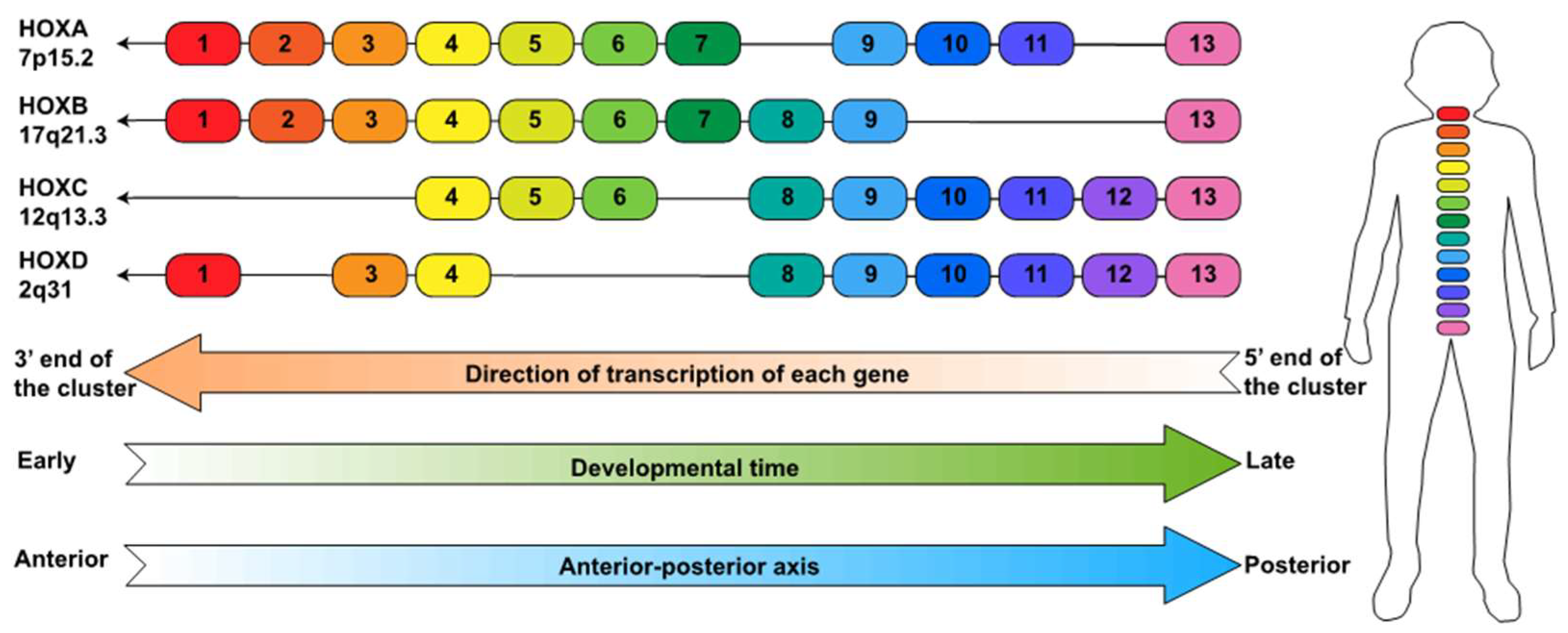
In healthy hematopoiesis (blood cell formation), HOXA9 contributes to the self‑renewal of hematopoietic stem and progenitor cells, and helps maintain a balance between stemness (ability to create new cells) and differentiation (becoming a mature cell). However, when HOXA9 becomes abnormally active (over‑expressed) or when it is fused to other genes, this balance is disrupted and that’s where leukemia (a blood cancer) comes into the picture.
HOX gene expression during hematopoiesis
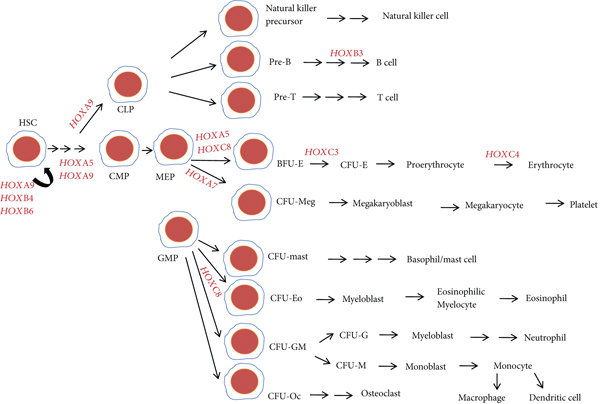
HOXA9 and Leukemia
Over‑expression in Leukemia
HOXA9 is frequently found to be over‑expressed in acute myeloid leukemia (AML). Studies show that in many AML patients, high levels of HOXA9 are associated with poor prognosis (less favourable outcomes). For example, a review noted that around 70 % of AML cases show elevated HOXA9 expression. NCBI
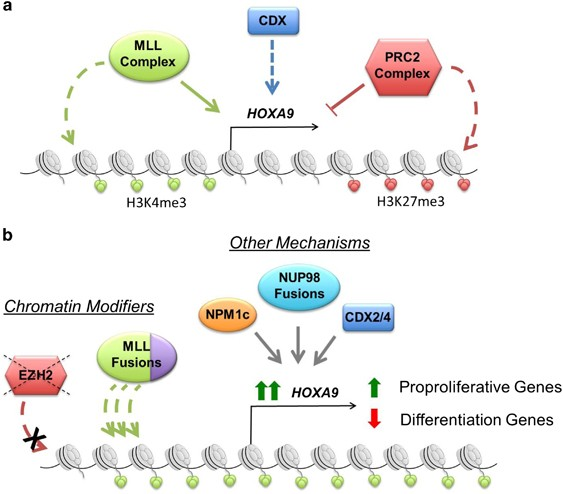
Gene Fusions and Mutations
A well‑documented mechanism involves the fusion of HOXA9 with other genes for example, the fusion gene NUP98‑HOXA9 (from a chromosomal translocation t(7;11)(p15;p15)). This fusion leads to leukemogenic activity (causing/leading to leukemia) by giving cells a powerful growth advantage and blocking their differentiation (normal maturation).
Direct and Indirect Targeting of HOXA9 Transcription Factor in Acute Myeloid Leukemia
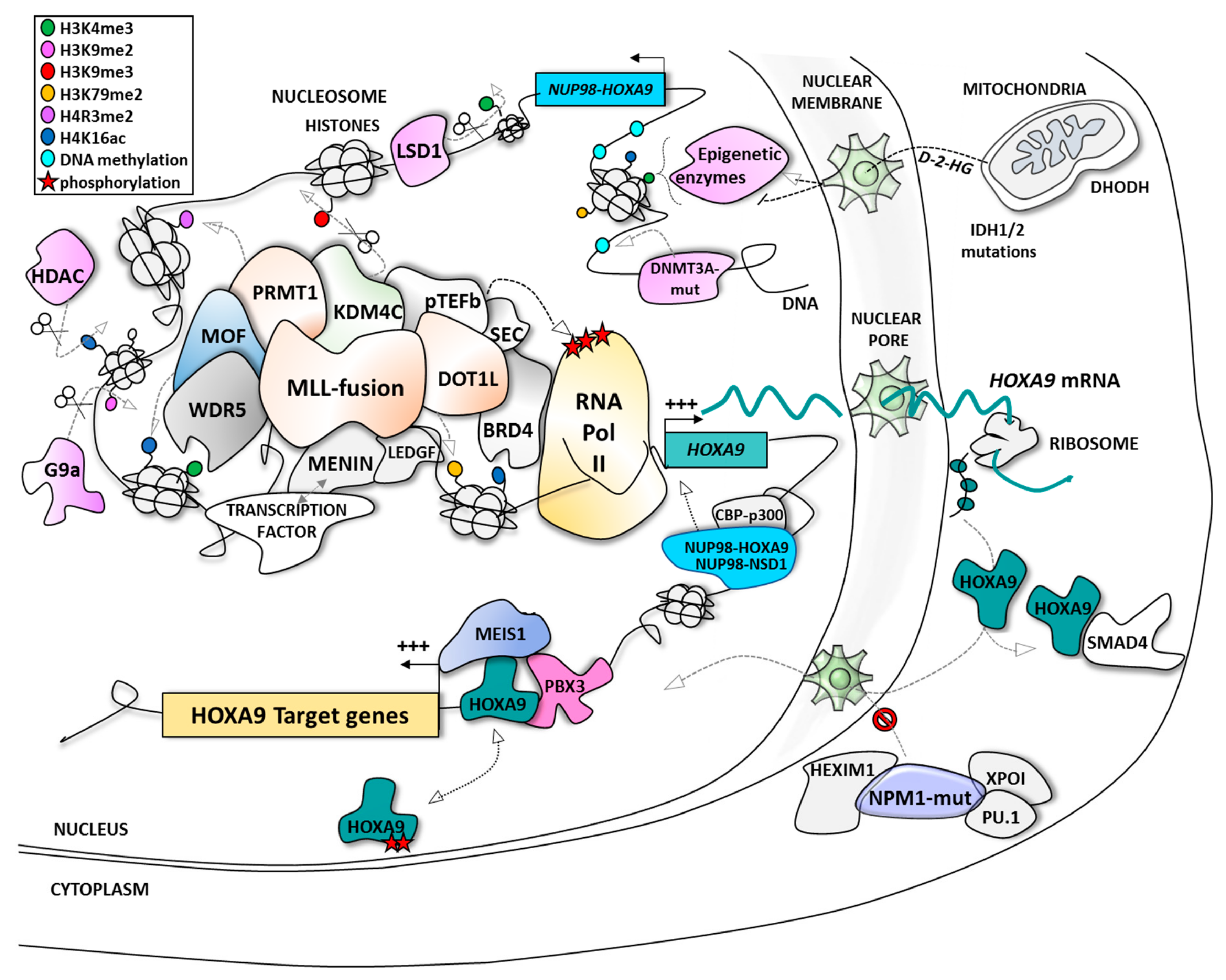
How HOXA9 Drives Leukemia ?
-Blocking Differentiation : When HOXA9 is highly active, immature blood‑cell progenitors fail to mature into healthy blood cells. Instead, they remain in a proliferative state one of the hallmarks of leukemia.
-Promoting Self‑Renewal : HOXA9 supports the expansion of progenitor cells, giving them more capacity to replicate and less reason to differentiate into mature cells. This contributes to a build‑up of immature cells (blast cells) typical in leukemia.
-Interacting with Co‑factors : HOXA9 rarely acts alone. It binds with other factors such as MEIS1 and PBX proteins to form complexes that drive gene networks favouring leukemic growth.
-Epigenetic and Non‑coding Regulation : HOXA9 expression and activity are regulated by epigenetic changes (e.g., histone methylation by DOT1L) and non‑coding elements (enhancers, distal elements). Recent work demonstrates how HOXA9 binds to non‑coding regulatory DNA regions to maintain leukemia.
Clinical Implications of HOXA9 in Leukemia
1-Prognostic Marker
Because high HOXA9 expression correlates with worse outcomes in AML, its measurement can serve as a prognostic biomarker (a factor to predict disease course).
2-Therapeutic Target
Although transcription factors like HOXA9 were once considered “undruggable”, considerable progress has been made. Strategies include :
- Indirect targeting by inhibiting epigenetic regulators upstream of HOXA9 (e.g., DOT1L inhibitors)
- Disrupting HOXA9 co‑factor interactions (with MEIS1/PBX)
- Directly targeting HOXA9‑DNA binding in future opportunities
Thus, HOXA9 represents not only a marker of disease but a potential point of intervention.
3-Research & Drug Discovery
Studying HOXA9 helps scientists understand leukemia at a molecular level how cell fate is set, how growth is regulated, and how differentiation is blocked. Insights into HOXA9 pathways feed into dr ug discovery and assay development.
Research Applications & Importance
For labs studying leukemia, stem cell biology or drug screening, HOXA9 offers several research avenues :
- Creating cell or animal models of HOXA9 over‑expression or fusion to understand disease.
- Screening compounds that affect HOXA9 levels or activity.
- Using HOXA9 expression/quantification assays to monitor response to treatment or test novel therapeutics.
- Investigating how HOXA9 controls gene networks and how altering these networks affects cell behaviour.
Because HOXA9 intersects development, stem cell regulation and oncogenesis, it is a major node of interest in both fundamental biology and translational (clinical‑research) work.
Product Introduction-HOXA9 ELISA Kit
To support research on HOXA9, the HOXA9 ELISA Kit available via Genprice provides a practical tool for measuring HOXA9 protein levels in experimental samples.
Product : Human Homeobox Protein HOXA9 ELISA Kit -CT‑cDNA‑Clone (Catalog 544‑MBS9329237‑01).
✅ Key Features
- Designed for the human HOXA9 protein quantification.
- Format : 48‑well plate/ 96-Well, appropriate for research use.
- Suitable for cell lysates or tissue extracts.
- Helps quantify changes in HOXA9 levels when performing experiments related to differentiation, leukemogenesis, or drug screening.
- Ideal for labs focusing on HOXA9 regulation, blood cancer biology or novel interventions.
🔍 Why It Matters ?
- Because HOXA9 is central in leukemic biology, being able to measure its protein level reliably allows researchers to:
- Track how experimental treatments (for example an epigenetic inhibitor) affect HOXA9 expression.
- Validate model systems (does HOXA9 over‑expression correlate with expected outcomes?).
- Support biomarker or mechanistic studies by providing quantitative data on HOXA9 protein levels.
Conclusion
HOXA9 is a powerful gene and protein in the context of leukemia. Its mis‑regulation not only serves as a marker of aggressive disease, but also as a driver of oncogenic processes. By measuring HOXA9 protein levels, researchers can gain insights into disease mechanisms, test new therapies and follow experimental outcomes. The HOXA9 ELISA Kit provides a practical bridge between molecular insights and experimental measurement enabling labs to quantify HOXA9 expression in a meaningful way.
If you are working in leukemia research, hematopoiesis, or novel dr ug discovery, HOXA9 deserves a place in your experimental toolkit.
Tags
- HOXA9
- Leukemia
- HOXA9 leukemia
- HOXA9 acute myeloid leukemia
- HOXA9 over‑expression AML
- HOXA9 fusion NUP98
- HOXA9 ELISA kit
- Human HOXA9 quantification
- HOXA9 biomarker Leukemia
- HOXA9 research assay

